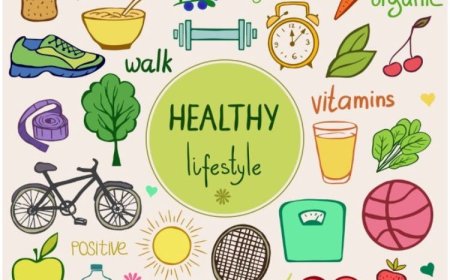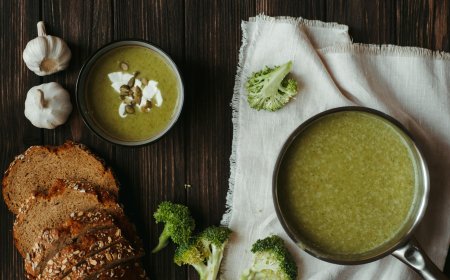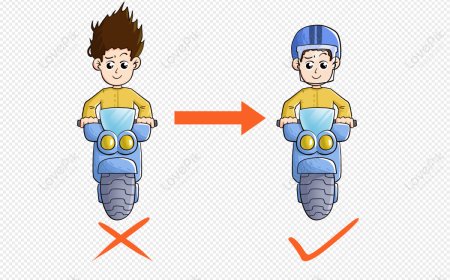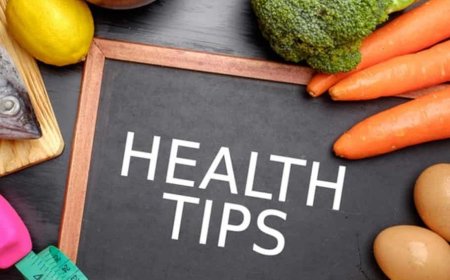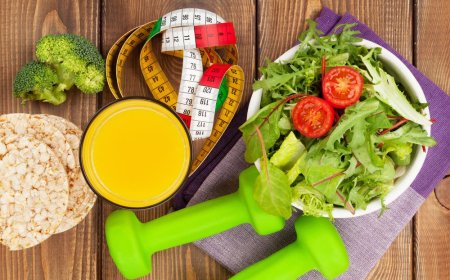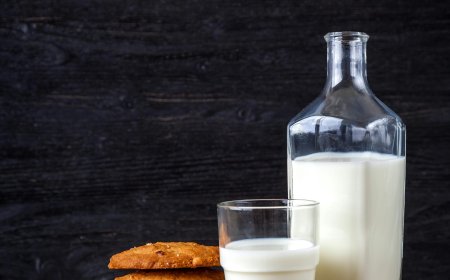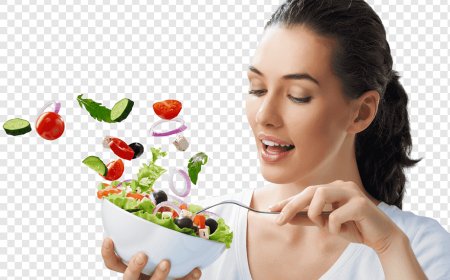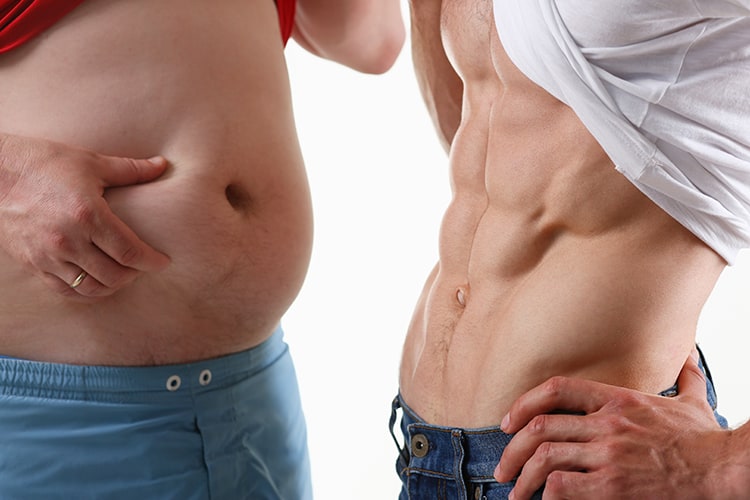Weight-Loss Simplified
Weight-loss is not a hard concept to grasp, yet so many people who have a desire to lose weight will fail miserably. We can know this to be true given that 95% of all dieters will fail, and will regain all, or more of the weight the had lost while on any given diet. You...

Weight-loss is not a hard concept to grasp, yet so many people who have a desire to lose weight will fail miserably. We can know this to be true given that 95% of all dieters will fail, and will regain all, or more of the weight the had lost while on any given diet.
You might be wondering – if losing weight is so simple, why do most people fail?
People fail at weight-loss because they overthink it. They fail because they think there is something special that has to be done. Failure comes when people will not do what it actually takes to lose weight, and to then keep it off permanently.
Here is how simple it is to lose your unwanted body fat;
In order to lose weight and thereby improve your health – you live how thinner and healthier people live. It is the same as wanting to live as good as the rich among us live. If you want to be rich, you must do what rich people do. You must have the education and experience to live up to that standard – otherwise you are doomed to remain poor. The concept really is as simple as that.
If you desire permanent weight-loss, you have to make a permanent change of lifestyle for yourself where you choose healthy nutrition and fitness above unhealthy nutrition and a sedentary lifestyle. If you are not willing to do this, then you are wasting your time, and possibly your money, grasping at straws to continue your unhealthy, nutritional lifestyle while wanting a slimmer and healthier body. If you are not willing to make the changes required for weight-loss, don’t be upset when the weight does not come off of your body.
Next time you are at a buffet, or a pot-luck dinner, watch how you fill your plate and then compare that to how those with weight problems fill their plates, and compare that to how thin people fill theirs.
Yes, there are those thin people who can seem to eat all that they want and never gain weight, but the bottom line is that if they are not gaining weight, they are eating fewer calories than they burn when averaged over the day, week, months, and years. Those people are usually going to be young men, but if you are not a young man, don’t think that you can, or should be able to eat the same as that young man. Additionally, it is certainly not uncommon that people who are thin in their youth will not be thin later on in life.
The bottom line with losing weight permanently is that weight-loss only comes when you are consuming fewer calories than your body needs to remain at a stable weight. And those calories will be as varied as each person you will meet.
It is commonly held that “a calorie is a calorie”, i.e. that diets of equal caloric content will result in identical weight change independent of macronutrient composition, and appeal is frequently made to the laws of thermodynamics. However, there is a distinct difference between how calories from healthy foods affect your body as opposed to how calories from calorie dense foods that are of no nutritional value affect your body. It is the same difference between putting good quality gas in your car, or low quality contaminated gas into your car. Your car might be an expensive, high performance vehicle, but fueling it with poor fuel will make even the best of engines to run poorly and inefficiently. Your body is the same.
There is a misunderstanding that continues to be repeated in the expression “a calorie is a calorie” which appears to be an exclusive reference to the first law of thermodynamics. The difficulty with this theoretical approach is that it is only part of the relevant physics and its relationship to biologic systems. The first law says that in any transformation the total energy in the system can be accounted for by the heat added to the system, the work done by the system on its environment and the change in energy content of all the components of the system. It is important to understand, however, that the first law does not say what the relative distribution between these effects will be for any process. In fact, the first law does not even allow us to say whether the process will occur at all. To understand the progress of a physical change it is necessary to understand the second law which introduces an entity known as the entropy, S, a measure of disorder in all processes. In all real (irreversible) processes, entropy increases, usually written ΔS > 0. The most common marker of increasing entropy is heat, although it is by no means the only evidence for increased entropy. (1)
Summary of thermodynamics in living organism
1. The second law of thermodynamics dictates that there is an inevitable metabolic inefficiency in all biological and biochemical processes with heat and high entropy molecules (carbon dioxide, water, urea) as the most common products.
2. The first law of thermodynamics is satisfied in living (open) systems by properly accounting for the mass excreted and the heat radiated and exported in high entropy molecules. (1)
The 1st law of thermodynamics explains human metabolism: the conversion of food into energy that is used by the body to perform activities. Metabolism in humans is the conversion of food into energy, which is then used by the body to perform activities. It is an example of the first law of thermodynamics in action.
Now consider the effects of eating. The body metabolizes all the food we consume. Eating increases the internal energy of the body by adding chemical potential energy. In essence, metabolism uses an oxidation process in which the chemical potential energy of food is released. This implies that food input is in the form of work. Food energy is reported in a special unit, known as the Calorie. This energy is measured by burning food in a calorimeter, which is how the units are determined.
Our body loses internal energy, and there are three places this internal energy can go—to heat transfer, to doing work, and to stored fat (a tiny fraction also goes to cell repair and growth). Heat transfer and doing work take internal energy out of the body, and then food puts it back. If you eat just the right amount of food, then your average internal energy remains constant. Whatever you lose to heat transfer and doing work is replaced by food, so that, in the long run, ΔU=0. If you overeat repeatedly, then ΔU is always positive, and your body stores this extra internal energy as fat. The reverse is true if you eat too little. If ΔU is negative for a few days, then the body metabolizes its own fat to maintain body temperature and do work that takes energy from the body. This process is how dieting produces weight loss.
The first law of thermodynamics applied to metabolism. Heat transferred out of the body (Q) and work done by the body (W) remove internal energy, while food intake replaces it. (Food intake may be considered as work done on the body. ) (b) Plants convert part of the radiant heat transfer in sunlight to stored chemical energy, a process called photosynthesis.
Life is not always this simple, as any dieter knows. The body stores fat or metabolizes it only if energy intake changes for a period of several days. Once you have been on a major diet, the next one is less successful because your body alters the way it responds to low energy intake. Your basal metabolic rate is the rate at which food is converted into heat transfer and work done while the body is at complete rest. The body adjusts its basal metabolic rate to compensate (partially) for overeating or undereating. The body will decrease the metabolic rate rather than eliminate its own fat to replace lost food intake. You will become more easily chilled and feel less energetic as a result of the lower metabolic rate, and you will not lose weight as fast as before. Exercise helps with weight loss because it produces both heat transfer from your body and work, and raises your metabolic rate even when you are at rest.
Key Points
- The first law of thermodynamics is a version of the law of conservation of energy, specialized for thermodynamical systems.
- In equation form, the first law of thermodynamics is ΔU=Q−WΔU=Q−W.
- Heat engines are a good example of the application of the 1st law; heat transfer into them takes place so that they can do work.
- An isobaric process occurs at constant pressure. Since the pressure is constant, the force exerted is constant and the work done is given as PΔVPΔV.
- An isobaric expansion of a gas requires heat transfer to keep the pressure constant.
- An isochoric process is one in which the volume is held constant, meaning that the work done by the system will be zero. The only change will be that a gas gains internal energy.
- For an ideal gas, the product of pressure and volume (PV) is a constant if the gas is kept at isothermal conditions.
- For an ideal gas, the work involved when a gas changes from state A to state B through an isothermal process is given as WA→B=nRTlnVBVAWA→B=nRTlnVBVA.
- For many systems, if the temperature is held constant, the internal energy of the system also is constant. It follows that Q=−WQ=−W in this case.
- Adiabatic processes can occur if the container of the system has thermally-insulated walls or the process happens in an extremely short time.
- For an adiabatically expanding ideal monatomic gas which does work on its environment (W is positive), internal energy of the gas should decrease.
- In a sense, isothermal process can be considered as the opposite extreme of adiabatic process. In isothermal processes, heat exchange is slow enough so that the system’s temperature remains constant.
- Human metabolism is a complicated process. The 1st law of thermodynamics describes the beginning and ending points of these processes.
- Our body loses internal energy. There are three places this internal energy can go—to heat transfer, to doing work, and to stored fat.
- Our body provides a good example of irreversible processes. Although body fat can be converted to do work and produce heat transfer, work done on the body and heat transfer into it cannot be converted to body fat.
In summary: Weight-loss Simplified
If you eat it (energy intake), you must burn it (energy expenditure), or you will store it (weight gain. The cycle of energy that takes place within our bodies, according to the Conservation of Energy:
- First, we eat food, which is packed with the macronutrients we need to function.
- Our bodies break down the food, burning carbs (or fats) for fuel.
- We use the energy we get from food to move our bodies, including working out.
- When we expend energy working out, we need to replenish it, so we eat.
This simple cycle repeats itself over and over again, day after day. Food becomes fuel, which we burn via exercise. In scientific terms, our bodies are factories for turning potential energy into kinetic energy.
What's Your Reaction?









